|
1972 - Police, Cessnas and air shows
The Medminster Group had purchased Air Gregory in 1971, but typical of John Delaney, the owner of the group, he left the existing management to run the businesses they understood as he was still a relative newcomer to aviation. The Gregory School of Flying fleet continued to change, moving away from Piper aircraft types and purchasing more Cessna trainers, particularly the Cessna 150. Perhaps the most successful training aircraft of all time, the Cessna 150 series of aircraft were popular as they were reliable, simple to maintain and cheap to operate, facets that keep the two seat aircraft at the forefront of flight training despite production ending in 1985. Over 31,000 Cessna 150 and 152 aircraft were built and many of them are still in service today. Air Gregory had eight Cessna 150s in their fleet by 1972, with three more on order.
|

Four of the Gregory School of Flying's Cessna 150s, in this case all 150F Aerobat versions of the popular trainer.
|
Another fleet change happened at Denham in 1972, this time with United Biscuits Aviation Department, when Hughie Kennedy again travelled to Wichita in Kansas to accept delivery of a new aircraft in October. This was an upgraded Beechcraft E90 King Air, G-BABW. The new E90 version of the King Air had significant performance improvements over their existing B90, most notably in terms of range, which had increased to 1,625 nautical miles. The PT6A turboprop engines had been upgraded to the more powerful -28 versions producing 680 horsepower, increasing the maximum speed to 287 mph and shortening the take-off distance required. After test and acceptance flying in the US, Kennedy flew the aircraft directly back to Denham via Greenland and Iceland.
|
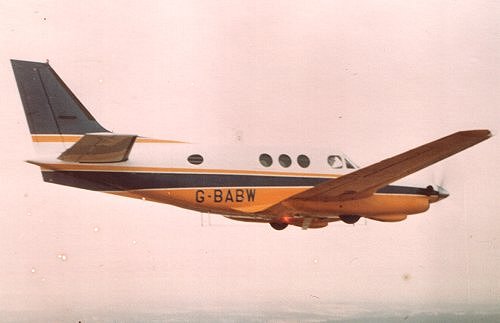
Beechcraft E90 King Air, G-BABW, joined the United Biscuits fleet at Denham in October 1972.
|
The Guild of Air Pilots and Air Navigators returned to Denham on 10 June 1972 to host their Garden Party on the aerodrome. This was organised by long time freind of Denham, Captain Ron Gillman of British European Airways, who was also the Master of the Guild between 1972 and 1973. Gillman had joined the RAF in 1939 and had flown Blenheims and Bostons in the bombing and then anti-shipping roles, earning the DFM and DFC for pressing home his attacks at low level with great courage. Post war he joined BEA, his flying abilities being recognised in 1962 when he received the Queen's Commendation for Valuable Service in the Air for his work as BEA's Senior Training Captain. He was dedicated to promoting aviation to the general public, and had been involved in organising several of the GAPAN garden parties. The programme reproduced below is indicative of Gillman's character, helpful and amusing in turn, yet seriously aimed at encouraging visitors into the air.
|
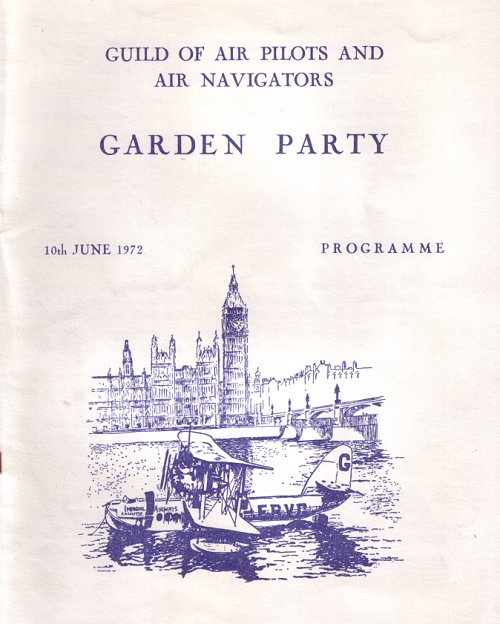
The programme for the 1972 Guild of Air Pilots and Air Navigators Garden Party.
|
|
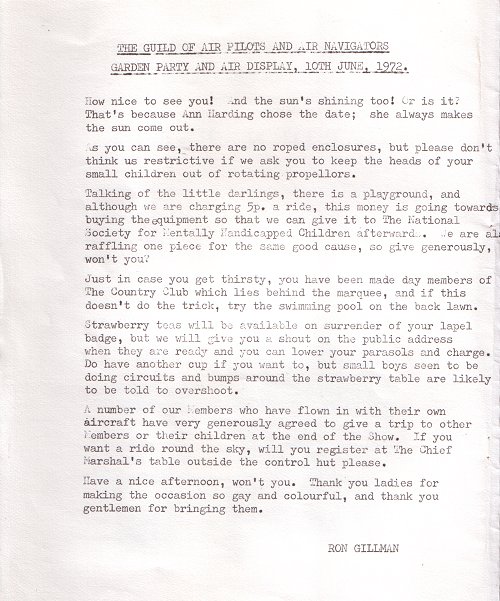
The programme for the 1972 Guild of Air Pilots and Air Navigators Garden Party.
|
|
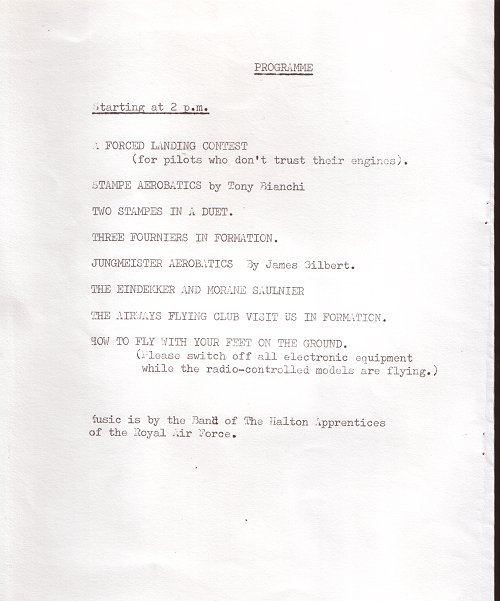
The programme for the 1972 Guild of Air Pilots and Air Navigators Garden Party.
|
|
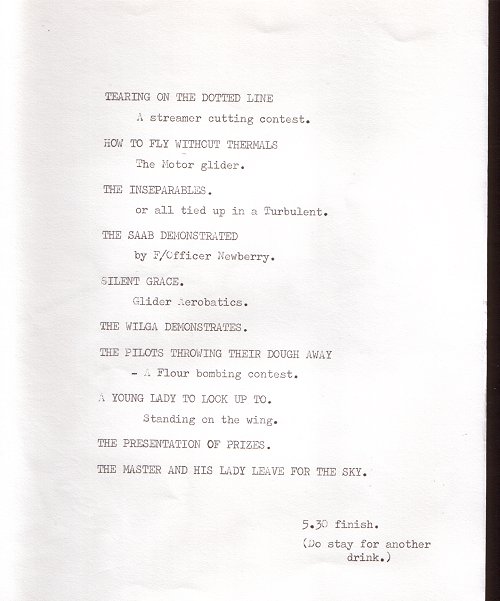
The programme for the 1972 Guild of Air Pilots and Air Navigators Garden Party.
|
|
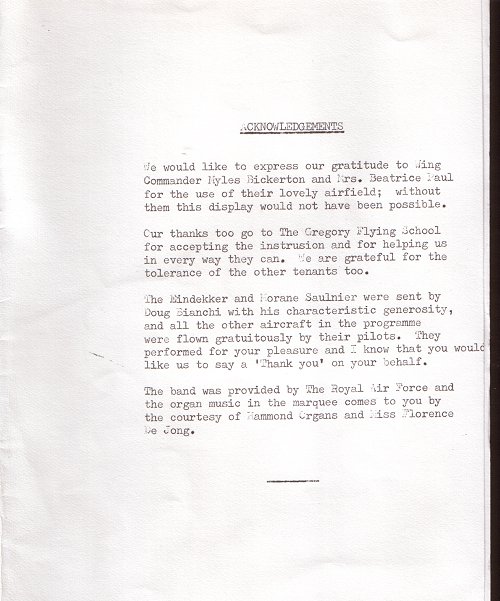
The programme for the 1972 Guild of Air Pilots and Air Navigators Garden Party.
|
The GAPAN Garden party included music from the band of the RAF Apprentices from RAF Halton and strawberry teas for visitors, while the air show included vintage and modern aircraft from many sources giving displays ranging from aerobatics to gliding and a flour bombing competition. GAPAN members also flew in in their own aircraft and offered free rides to members of the public at the end of the display, very much in the spirit of encouraging air-mindedness among the visitors.
|
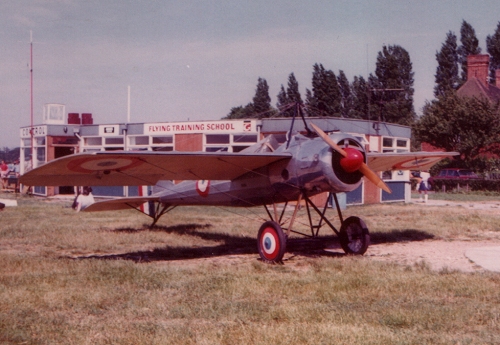
Doug Bianchi of Personal Plane Services at Booker brought this replica of a Morane Saulnier N First World War monoplane fighter, G-AWBU, to the display.
|
|
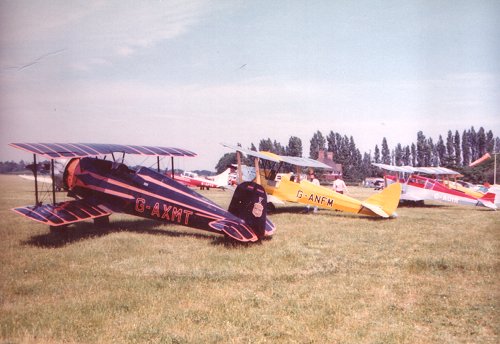
James Gilbert bought his immaculate Bucker Bu.133 Jungmeister to Denham to perform an aerobatic display.
|
Another event at Denham in 1972 was the Metropolitan Police Flying Club open day held on 21 August, the Western Section of the club having moved to Denham the previous year. Officers from the Metropolitan Police, Hertfordshire Constabulary and Thames Valley took part in a variety of competitions, from spot landing to flour bombing, with the overall competition being won by PC Humphrey Bishop flying a Cessna 150. One of the more unusual displays was provided by Hertfordshire's Sgt. Ray Bailey, who brought along a 75 foot hot air balloon which was used by the force for advertising as well as flying experience.
|
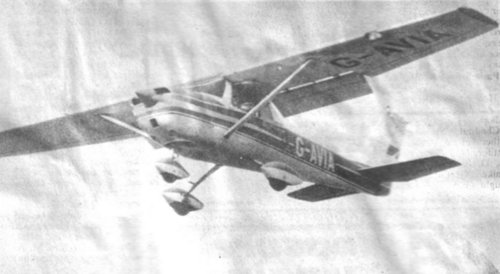
Although grainy, this shot from the local paper shows one of the Police Flying Club aircraft making its bombing run in the flour bombing competition.
|
The open day was to act as a catalyst in a number of ways. In 1972, the Metropolitan Police had published a report into the success of their aerial activiites and the efficacy of police air operations. The report concluded that "there are certain tasks that are best achieved from the air, as an equivalent ground operation would involve considerable cost and use of resources over an extended period, drawing them away from other duties". In 1970, the Metropolitan Police had inaugurated its "Emergency" helicopter use scheme, where the Police could call upon helicopter operators in the London area to provide assistance in the search for missing children and other roles. Air Gregory was one of these operators, and they used the flying club open day in 1972 to promote their activities in the light of the report. This was to lead to a demonstration to senior Police Officers the following year, which was to bring together the aviation interests of all the police forces in the UK and eventually lead to the development of a National Police Air Service.
|
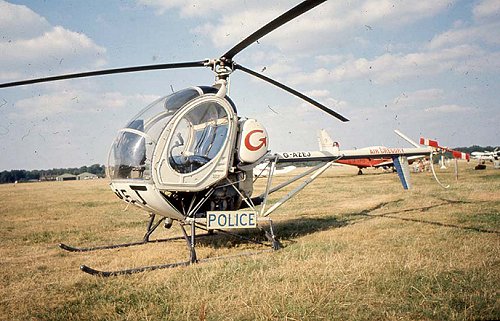
Air Gregory had been assisting the Metropolitan Police force with helicopter flights under the emergency use scheme since 1970.
|
As already mentioned, the Police Flying Club event was to have repercussions beyond the display, as will be related next.
|
|

